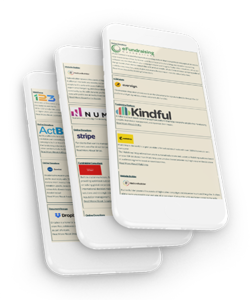The CA 460 report is used by recipient committees to report both expenditures and receipts. Use the line by line guide below to ensure or troubleshoot data on the report is appearing where it should.
Please note: The date of election will only pull to the report if you generate the report with Pre-Election selected as the Report Period. The date will not pull to the report for any other Report Periods. Please see the CA Form 460, page 4 – Date of Election
Cover Page
Section 1: Type of Recipient Committee
This information is pulled from mostly the Filer Committee Type within the Committee record, but also the report generation screen.
- Officeholder, Candidate Controlled Committee: Filer Committee Type is Candidate
- State Candidate Election Committee: Candidate Record is affiliated with the Filer entity record via Relationships. Also ensure the Office Sought is one of the following:
- Governor
- Lieutenant Governor
- Secretary of State
- State Controller
- Attorney General
- State Treasurer
- Insurance Commissioner
- Superintendent of Public Instruction
- Supreme Court Justice
- State Senator
- State Assembly Person
- Board of Equalization Member
- Public Employees Retirement System
- State Appellate Court Justice
- Recall: Current Election is a Recall Election
- General Purpose Committee: Filer Committee type is NOT Candidate or Ballot Measure. Also, there should not be any Supported Candidate or Opposed Candidate relationship linked to the Filer entity record
- Sponsored: Sponsored is checked in the Committee Info on the Filer entity record
- Small Contributor Committee: Filer Committee type is Small Contributor Committee
- Political Party / Central Committee: Filer Committee type is Party
- Primarily Formed Ballot Measure: Filer Committee type is Ballot Measure
- Controlled: Controlled box is checked in the Committee Info on the Filer entity record
- Primarily Formed Candidate/Officeholder Committee: Ensure at least one individual is linked to your Filer entity record with either the Supported Candidate or Opposed Candidate relationship.
Section 2: Type of Statement
This is determined by the Report Period dropdown menu on the criteria screen when generating the report.
Section 3: Committee Information
- Committee contact info pulls directly from the committee record itself. Address marked as Primary will pull to the first instance of address; Address marked is Mailing will pull to the second instance (if different).
- Treasurer(s) / Assistant Treasurer(s) must be linked via Relationships on the Filer entity record.
Section 4: Verification
- Executed on: The date you generate the report
- Signers: Based on the Relationships found on the Filer Committee entity record. These can be selected during the report generation process. You can select up to four signers, but only the first is required. Note that these signer fields will not appear for local filers filing with Netfile.
Cover Page, Part 2
Section 5: Officeholder or Candidate Controlled Committee
- The Filer committee type must be Candidate.
- Candidate must be linked as Candidate/Candidate Of to the Filer, and must be marked as Primary for the Filer.
- Address is the primary address on the linked Candidate’s record.
- Office Sought or Office Held, Jurisdiction Description and District Number of the linked Candidate must be filled in.
Section 5 (b): Related Committees Not Included in this Statement
- Related Committee must be a Political Committee linked to the Filer using the Authorized Committee/Authorized Committee Of Relationship. There can be multiple committees.
- If the Controlled box is checked under Committee Info on the linked committee, the Yes box will be checked under Controlled Committee? section.
Section 6: Primarily Formed Ballot Measure Committee
- First create a Ballot Measure. Ensure the Letter or Number and Jurisdiction fields are filled out.
- Next link Ballot Measure with Ballot Measure Supported or Ballot Measure Opposed.
Section 6(b): Identify the controlling officeholder, candidate, or state measure proponent, if any
- Filer committee type must be Candidate or Ballot Measure.
- Filer must have Controlled checked under Committee Info.
- Filer must have a linked Candidate using the Candidate/Candidate Of Relationship.
- Address is the primary address on the linked Candidate’s record.
- Office Sought or Office Held and District Number of the linked Candidate must be filled in.
Section 7: Primarily Formed Candidate/Officeholder Committee
- Candidate must be linked via either Opposed Candidate/Candidate Opposed By or Supported Candidate/Candidate Supported By relationship.
- Linked Candidate must have Office Sought filled in.
Summary Page
Contributions Received
Line 1 (Schedule A – Monetary Contributions)
- Transaction Types: Monetary Contributions (including contributions with tags Conduit-Conduit Check, Conduit-Donor Check, and Transfer), Loan Received Balance Reduction, Enforceable Pledge Payment, Enforceable Pledge (as memo), Anonymous Monetary Contributions (always unitemized)
- If on the PDF, you see a transaction with [info] in front of the amount, this indicates the transaction has no cash impact on the summary totals. This is understood by all agencies.
Line 2 (Schedule B-Part 1, Loans Received)
- Transaction Type: Loans Received
Line 3, SUBTOTAL CASH CONTRIBUTIONS
- Total of Line 1 and Line 2
Line 4 (Schedule C, Nonmonetary Contributions)
- Transaction Types: Inkind Contribution (including contributions with tags Conduit – Inkind), Accrued Expense Balance Reduction
- If the tag is Admin Costs Paid by Sponsors, transactions will pull to this section (per the state’s direction) with $0.00 as the amount. This tag is for any contributions toward administration costs paid by a sponsor (i.e. a sponsor paid the administration costs directly).
Line 5, TOTAL CONTRIBUTIONS RECEIVED
Expenditures Made
Line 6 (Schedule E, Payments Made)
- Transaction Types: Expenses, Accrued Expense Payment, Loan Made Balance Reduction, Non-Monetary Expense (as memo), Refunded Contribution, Allocation Transfer (from State to Federal), Loan Rec’d Interest Payment
Line 7 (Schedule H, Loans Made to Others)
- Transaction Type: Loan Made
Line 8, SUBTOTAL CASH PAYMENTS
- Total of Line 6 and Line 7
Line 9 (Schedule F, Accrued Expenses)
- Transaction Type: Accrued Expense
Line 10 (Schedule C, Nonmonetary Contributions)
- Transaction Type: Inkind Contribution (including contributions with tags Conduit – Inkind), Accrued Expense Balance Reduction
- If the tag is Admin Costs Paid by Sponsors, transactions will pull to this section (per the state’s direction) with $0.00 as the amount. This tag is for any contributions toward administration costs paid by a sponsor (i.e. a sponsor paid the administration costs directly).
Line 11, TOTAL EXPENDITURES MADE
- Total of Lines 8, 9, and 10
Current Cash Statement
Line 12, Beginning Cash Balance
- This is the total from Line 16 on the previous report
Line 13, Cash Receipts
- Amount from Line 3 (Subtotal Cash Contributions) on main Summary Page
Line 14 (Schedule I, Misc Increases to Cash)
- Transaction Type: Other Income, Anonymous Other Income (always unitemized), Allocation Transfer (Federal to State), Refunded Expense
Line 15, Cash Payments
- Amount from Line 8 (Subtotal Cash Payments) on main Summary Page
Line 16, ENDING CASH BALANCE
- Add Lines 12, 13, and 14, then subtract Line 15
Line 17 (Schedule B-Part 2, Loan Guarantors)
- Transaction Type: Loan Received Guarantee
Cash Equivalents and Outstanding Debts
Line 18, Cash Equivalents
- Ending Investment Balance pulled from the criteria screen when generating the report. The most common amount here is $0.00
Line 19, Outstanding Debts
- Total of Line 2 and Line 9 from Column B
Line 20 & 21, Calendar Year Summary for Candidates Running in Both the State Primary and General Elections
- Line 20, 1st Column: Total of all Sch A/B/C transactions dated 01/01 – 06/30 (or to date)
- Line 20, 2nd Column: Total of all Sch A/B/C transactions dated 07/01 – 12/31 (or to date)
- Line 21, 1st Column: Total of all Sch C/E/F/H transactions dated 01/01 – 06/30 (or to date)
- Line 21, 2nd Column: Total of all Sch C/E/F/H transactions dated 07/01 – 12/31 (or to date)
- If you see $0.00 here, and are expecting something else, please see this help file
Line 22, Expenditure Ceiling Summary for State Candidates
The following transactions are included in the Line 22 calculation:
- Inkind Contributions from all except Party Committees
- Expense, Accrued Expense, Refunded Expense & Non-Monetary Expenses and their corresponding splits unless the transaction in question has tag Exempt from Expenditure Ceiling
If you have Expenditure Limit data that needs to auto-populate in the box on Line 22, first ensure the election you are generating the report for has the Accepting Voluntary Limits option checked. This is handled on the Elections page under the Tools tab and must be done for each relevant election.
For any transactions that are exempt from such expenditure limits, add the tag Exempt from Expenditure Ceiling to prevent them from appearing in this section.
NOT INCLUDED IN SUMMARY TOTALS
Schedule D: Summary of Expenditures Supporting/Opposing Others:
- Transaction Type: Support/Oppose Memos, Loan Made Balance Reduction
- Transaction Type: Expense (split), Accrued Expense (split), State Portion of Allocated Expense, State Portion of Allocated Accrued Expense Payment, State Portion of Allocated Non-Monetary Expense (as memo)
- Sch G has a $500 itemization threshold – higher than the standard $100 itemization threshold
REPORTING CODES (for expenditures):
- CMP: Campaign paraphernalia/misc. Lawn signs, buttons, bumper stickers, T-shirts, potholders, etc. Includes costs of election night event.
- CNS: Campaign consultants. Fees and commissions paid to professional campaign management or consulting firms.
- CTB: Contributions. Contributions made to other candidates and committees. Use CTB for direct monetary contributions. For nonmonetary (in-kind) contributions, use CTB and, if one of the other codes accurately describes the expenditure, you may enter that code also. Otherwise, describe the payment. Also provide the name of the candidate or committee that received the nonmonetary contribution in the Description of Payment column.
- CVC: Civic donations. Donations to civic, nonprofit or education organizations; payments for community events.
- FIL: Candidate Filing/Ballot Fees. Payments to election officials for candidate filing fees and fees charged for publication of a ballot statement.
- FND: Fundraising events. Expenditures associated with holding a fundraising event, including payments for event space to hotels or halls, payments for food and beverages to restaurants, caterers and other vendors, and payments for speakers, entertainment, and decorations. Includes costs of house parties. (Use LIT for costs of invitations, brochures, and solicitations associated with fundraising events.)
- IND: Independent expenditures. Payments for communications that support/oppose other candidates or measures that are not made in consultation or coordination with the candidates or a ballot measure committee. Use IND and, if one of the other codes accurately describes the independent expenditure, you may enter that code also. Otherwise, describe the payment. Also provide the name of the candidate or ballot measure supported or opposed by the expenditure
- LEG: Legal Defense. Attorney or other fees paid for legal defense.
- LIT: Campaign literature and mailings. Preparation, production, and distribution of campaign literature, direct mail pieces, fundraising solicitations, and door hangers. Includes costs of mailing lists, design/graphics, copy and layout, printing and photocopying. Includes payments to be on a slate mailer, and for absentee ballot mailers.
- MBR: Member Communications. Payments for communications to members, employees, or shareholders of an organization, or their family members, for the purpose of supporting or opposing a candidate or ballot measure.
- MTG: Meetings and appearances. Costs associated with meetings, press conferences, town halls, constituent meetings, etc.
- OFC: Office expenses. Expenditures for office rent; utilities (including cellular phone service); purchase or rental of office equipment (computer, fax, photocopier, etc.) and furniture; office supplies, etc.
- PET: Petition circulating. Includes payments for printing petitions and payments to signature gathering firms for ballot measure qualification drives.
- PHO: Phone banks. Costs of phone banks.
- POL: Polling and survey research. Costs of designing and conducting polls, reports on election trends, voter surveys, etc.
- POS: Postage, delivery and messenger services. Includes U.S. Postal Service, Federal Express, United Parcel Service, and other delivery and courier services.
- PRO: Professional services. Includes legal, accounting, and bookkeeping services.
- PRT: Print space and production costs. Includes advertising space in newspapers, magazines and other publications, and billboard ads.
- RAD: Radio airtime and production costs.
- RFD: Returned contributions.
- SAL: Campaign workers salaries. Includes state and federal payroll taxes.
- TEL: Television or cable airtime and video production costs.
- TRC: Candidate travel. Payments or reimbursements for travel, lodging, and meals of a candidate.
- TRS: Staff/spouse travel. Payments or reimbursements for travel, lodging, and meals of a candidate’s representative (staff), or member of the candidate’s household.
- TSF: Transfers. Only use this code to report the transfer of funds to another authorized committee of the same candidate or sponsoring organization. Report funds this committee gives to other committees on Schedule E, as contributions (CTB) to those committees, not as transfers.
- VOT: Voter registration costs.
- WEB: Information technology costs. Includes payments for website design, e-mail, internet access, production of website and e-mail advertising.
Payments that are contributions or independent expenditures to support or oppose other candidates, measures, and committees must also be summarized on Schedule D.
Administrative Services: Administrative overhead and start-up expenses paid by a sponsoring organization for its sponsored committee are not contributions to the committee but must be reported on Schedule C. Report the value of the services in the Description of Goods or Services column and a zero in the Amount and Cumulative to Date columns.






